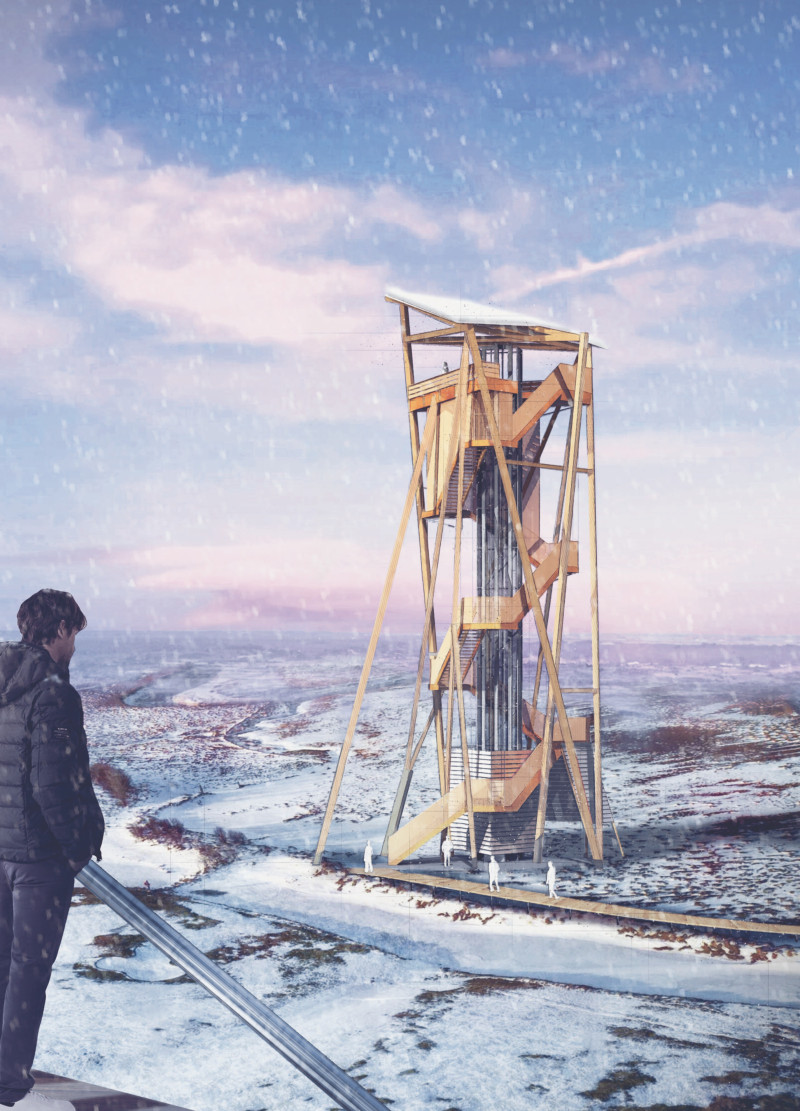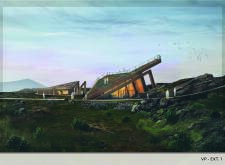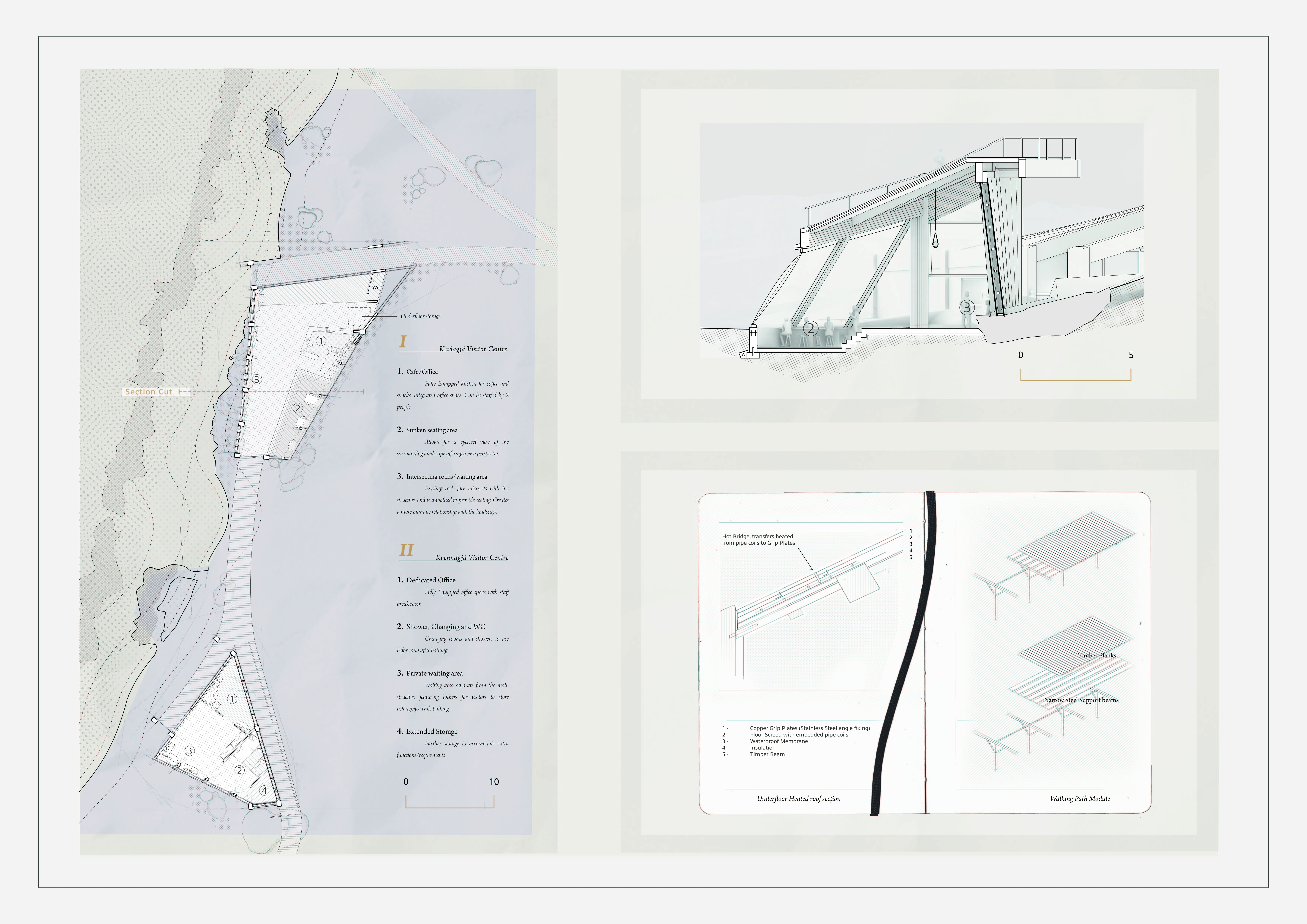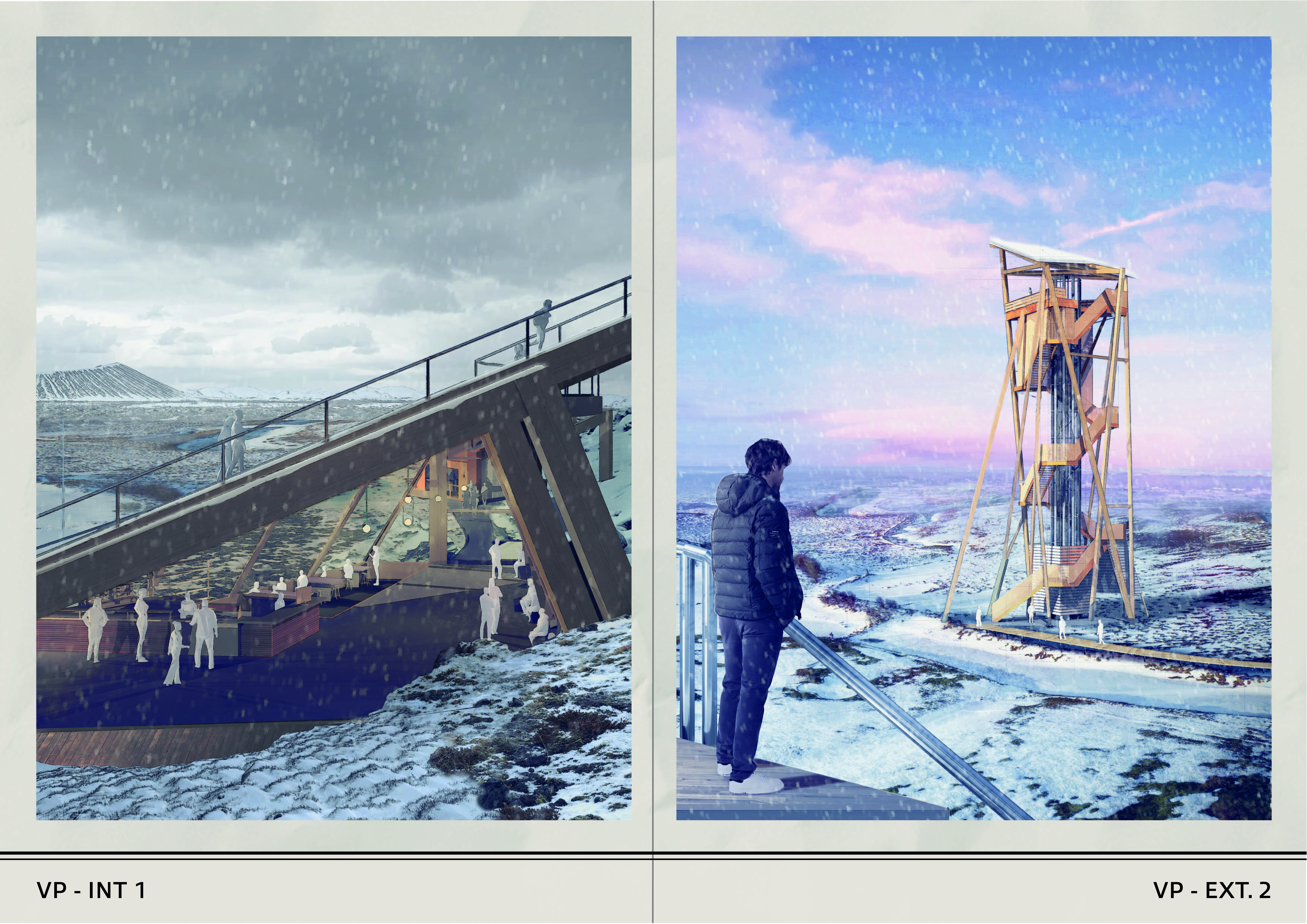5 key facts about this project
The Grjótagjá Caves Regeneration Scheme is set in Iceland, aiming to improve visitor interactions while carefully considering the natural landscape. The project focuses on integrating new structures within the unique geological environment of the Grjótagjá caves. Through a series of planned stages, it seeks to create spaces that enhance the experience of visitors without overwhelming the surroundings.
Visitor Centre at Karlagjá
The first stage features the Karlagjá Visitor Centre, which includes a roof that visitors can walk on. This roof also provides shelter and allows for views of the landscape. Made from patina copper, the roof is designed to be heated from below, which helps to keep it clear of snow in colder months. Inside, a sunken café encourages a close connection to the rock wall, creating an intimate setting where visitors can appreciate the natural material up close.
Visitor Centre at Kvennagjá
The second stage introduces the Kvennagjá Visitor Centre, which enhances the bathing experience. This structure includes private bathrooms and showers, purposefully placed away from busy pathways. This orientation provides visitors with a peaceful environment, allowing them to enjoy the caves away from the crowd. The design fosters a sense of privacy, making the experience more personal.
Observation Tower
The final phase includes an observation tower located in the fields nearby, designed to lead visitors along pathways that explore the continental fault lines. This structure provides elevated views, allowing guests to take in the surrounding landscape. Designed with a light footprint, it blends well with the environment. The goal is to encourage exploration while highlighting the natural beauty of the area.
One notable feature of the overall design is the careful choice of materials. The patina copper roof of the Karlagjá Visitor Centre not only serves its functional purposes but also visually connects the building to the landscape, enhancing the relationship between the constructed elements and the natural surroundings.





















































